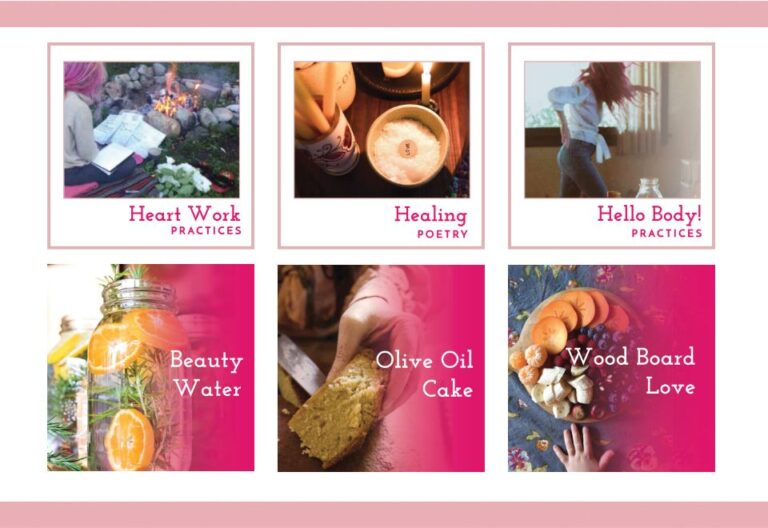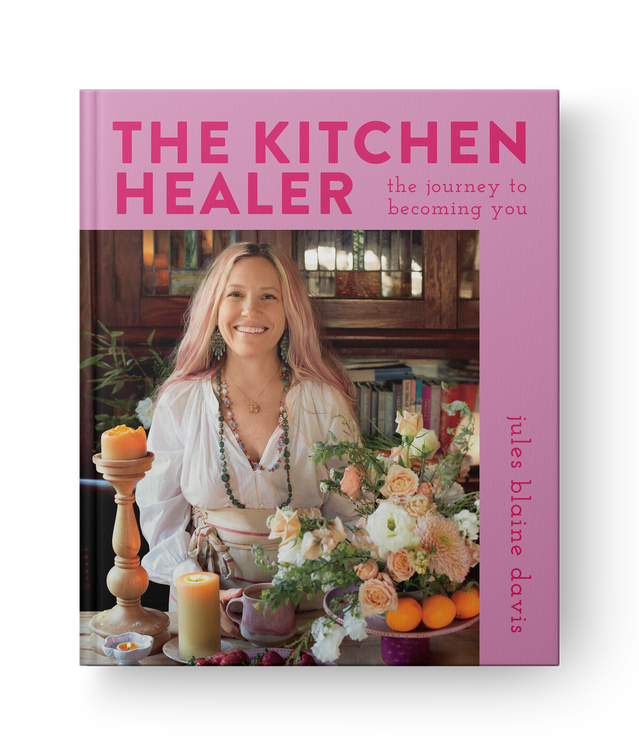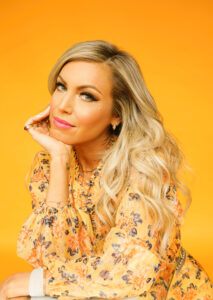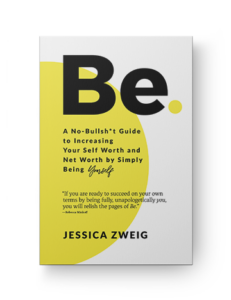Hello gorgeous community of amazing human beings,
For the last 15 years, I have been cooking up this question:
What does it look like to nourish YOU?
Let’s drop everything we might think this is
and everything you didn’t get done today
and bring our collective shoulders down from the sky.
Let’s take a minute here. We are just getting started, yet I feel we need to slow down. Will you take a deep breath with me? Thank you for being here with me. Thank you for breathing. There is nothing to do here.
You can bring your awareness to your breath with an inhale through your nose. Open your mouth slightly and exhale with a HAAAAAAAAA sound. It feels so good to drop everything and breathe. Me too. To let go, even a little, is a real lovefest for the heart and mind = heart mind.
It feels so good, can we do one more?
You can close your eyes this time if you want to—
I will be right here.
We are just getting here, together.
Now let me ask you again:
What does it look like to nourish YOU?
What if I told you that your kitchen is a place of stories, mothers, grandmothers, imprints, and emotional weather patterns that shaped how you live now? It is also a place to deeply nourish yourself and cook up the life you have been longing to live.
Your kitchen (yes your kitchen!) is a fierce, unconditionally loving mother holding what is ripe and ready to become inside of YOU. Who would have thought that you can heal your life in your kitchen? I did! And now you can.
I am excited to share my new book: The Kitchen Healer: The Journey to Becoming You.

It invites you to bring your entire body into the kitchen, put your shame into the fire, offer your grief to the soup—allowing all you have been hungry for to begin to feed YOU. As you turn on the fire, you will come home to yourself. You will make the room you need, to hear and see and feel the stories you have been carrying.
You will begin, again and again, to become YOU.
Welcome home.
In loving service to your courage, your kitchen healer,
x x x x jules
Jules Blaine Davis, the Kitchen Healer, is a TED speaker and one of Goop’s leading experts on women’s healing. She has led transformational gatherings, retreats, and a private practice for over fifteen years. She has facilitated deeply nourishing experiences at OWN and on retreat with Oprah Winfrey, among many other miracles. Jules is a pioneer in her field, inviting women to awaken and rewrite the stories they have been carrying for far too long in their day-to-day lives. She is cooking up a movement to inspire and support women to discover who they are becoming.

Learn More
Amazon | Barnes & Noble | IndieBound | Bookshop | Sounds True
Without social networking, motorized vehicles, or modern-day technology, many of our ancestors went for what they wanted and got it. One trailblazing “I’ve got this” woman I revere is Dr. Rebecca Lee Crumpler. As the Civil War raged in 1864, 33-year-old Rebecca Lee became the first Black female physician in the US. She graduated from what is now Boston University School of Medicine. In 1865, with her husband, Arthur Crumpler, she courageously journeyed to Richmond, Virginia, to provide medical care to recently freed slaves that the White doctors would not touch.
Her life in Virginia wasn’t easy. While there, many pharmacists refused to honor her prescriptions, some hospitals denied her admitting privileges, and some—reportedly, even physician colleagues—wisecracked that the “MD” after her name stood not for medical doctor, but for “mule driver.” But Dr. Crumpler persevered!
She remained in Virginia for almost four years then returned to Boston in 1869, established her medical practice, and wrote a book about women’s and children’s health. She blazed a trail upon which many have and do tread.
Hers is just one story of a brave, determined, capable Black woman. Over the centuries, there have been more in numbers untold! In the 1900s, especially during the Civil Rights Movement, Black women were instrumental in the reckoning of a nation. While their husbands got the most notoriety, matriarchs such as Coretta Scott King, Juanita Abernathy, and Lillian Lewis stood along- side their men and played pivotal roles in moving the nation forward to live up to its creed.
And as the first decade of 2000 ended and a new one began, Black women became increasingly on the move, onward and upward, and are now doctors, accountants, judges, pilots, investment managers, nurses, and elected officials as well as wives, mothers, and caregiving daughters. Undoubtedly, many of today’s Black women are carving out lives about which our great-great- grandmothers may have only dared to dream.
Black women’s voices are no longer muted or silenced; instead, they are heard around the world, with sophisticated, strong, and successful style. In 2020, America elected its first Black female vice president, Kamala Harris, at whose 2021 inauguration the words of the first Youth Poet Laureate of the US, Amanda Gorman, rang forth for the world to hear. But there’s more!
In February 2021, Georgia Tech engineering major Breanna Ivey interned at NASA and helped put their rover, Perseverance, on Mars! And as the COVID-19 pandemic stole lives around the globe, vaccine researcher Kizzmekia Corbett, who has a PhD in microbiology and immunology that she earned at the University of North Carolina at Chapel Hill, worked with the National Institutes of Health and was instrumental in bringing safe, effective vaccines to the world.
Indeed, Black Girl Magic is in full force! When we look around, seemingly there’s hardly any- thing Black women can’t do—and do well—in any field, including medicine, the military, politics, education, technology, business, sports, aeronautics, and the arts. What we put our minds to, we can achieve! With an “I’ve got this” approach and determination, it is ours to be had.
But life is not a bed of roses for all Black women. Too often (and still) negative images barrage our psyches, loved ones in our community lose their lives in gun violence, and our health often needs dramatic improvement. Black women still carry the highest incidence of, and the poorest prognosis for, medical conditions that affect practically every organ system in the body. We are more obese and have a shorter life expectancy than other women in the female demographic, and we carry the highest mortality rate for many killer diseases such as diabetes, heart disease, cancer, infant mortality, HIV/AIDS, and more.
Despite those findings, the plight of Black women’s health is rarely, if ever, specifically addressed at length in general women’s health books. For that reason I have stepped outside of my medical office, outside of the sacred space of the surgical suite, even outside of my city and state to offer women in America and abroad Black Women’s Wellness: Your “I’ve Got This!” Guide to Health, Sex, and Phenomenal Living. May it be the one-stop source you can reference on your personal quest to achieve total wellness, health, and happiness in every important aspect of your life. I offer this book as a Black female who grew up poor in a single-parent household. I never knew any of my grandparents, had an absentee father (who I later found when I was 49), a mother with some “issues,” no siblings, and many naysayers in my midst. But to achieve my goals to become a physician and a surgeon, I studied to show myself approved. It wasn’t easy, but I got it done.
Over the years, I’ve seen thousands of women of various ethnicities suffer with chronic diseases, some of which can be avoided, or at least, better controlled. I also know the remarkable and re- warding joy of practicing medicine and performing surgery to remove disease, help women with their infertility, or free them from cancer.
As a physician, my question to you is, Are you taking time to take care of your health? In fact, when did you last really think about—and take time for—your health in a comprehensive, serious, deliberate manner?
Jack Kornfield’s Buddha’s Little Instruction Book reminds us that “each morning we are born again. What we do today is what matters most.” Kornfield also tells us, “If your compassion does not include yourself, it is incomplete.” Whatever your schedule, lifestyle, religious preference, or personal obligation to others, the reality is you won’t be able to do anybody any good if you’re in poor or failing health. As said in the 2021 movie Robin Roberts Presents: Mahalia, “Take one seed of what you give others and plant it in yourself.”
The words and images within these pages present information that is applicable to the specific medical, spiritual, emotional, and social needs of Black women. However, non- Black women can glean valuable information about their health and standing in this book as well because I also provide comparative data for Black, White, Hispanic, Asian, and Native American women, as well as some data about our male counterparts. But special attention is given to Black women because the fact is, Black women’s health concerns and challenges are different from those of other women.
In these pages you will find staggering statistics and a less-than-desirable legacy of Black women’s health. But you will also find tools, medical information, and encouragement that can liberate you and Black women everywhere from a similar fate. With knowledge comes power.
Look at all the wonderful things Black women have done and continue to do when they employ their mind and determination in force. Hold on to that because improving one’s physical health is doable—you can do it!— and changing the trajectory of Black women’s health is also doable. It can be done, and it must be done because changing the health of Black women can change the health of the Black fam- ily and that of all future generations. As you review and compare the health statistics across racial lines presented herein, remember one thing: the goal isn’t to be like White or Asian women; the goal is to be healthier Black women. Black Women’s Wellness provides a head-to-toe medical reference, with information that will carry you for years to come. Some of you might read this book cover to cover, as a whole. Others might read chapters that address your, or a loved one’s, current medical concern, circumstance, or curiosity. Or as you flip through the pages, you might see a pie chart or graph that grabs your attention or gives you pause.
In chapter 1, I begin with my “Societal Stress and Black Women’s Health” flowchart that ties together the psychosocial challenges and micro- aggressions that we face as Black women and how those psychosocial stressors can affect our physi- cal well-being.
In part 1, I present timely information about heart disease, diabetes, maternal mortality, cancers, and HIV/AIDS . . . the top five conditions that are robbing Black women of life and longevity.
In part 2, I hone in on our womanly feminine form and function. As with all creation, the hu- man body is a thing of beauty with wonders it performs! No one would be alive today without a woman’s body, for it is through women that all life is formed and born.
Medical conditions can affect all of us—whether we are tall or short; “thick” or thin; heterosexual or homosexual; light-skinned, “olive-complected,” or the color of rich, dark chocolate. You’ll read about your reproductive anatomy and physiol- ogy and the diseases that can affect your female organs, such as fibroid tumors and endometriosis, but also other medical conditions that cause mid- life “female” problems such as a dropped bladder, urinary incontinence, and pelvic pain. You’ll read about vision problems, arthritic conditions, sickle cell disease, multiple sclerosis, and more. And if you are menopausal and utterly confused about hormone replacement therapy, this part can give you guidance.
No book on wellness is fully complete with- out addressing sex. Can I get an amen? Given my personal experience and professional expertise, I wrote the sex, sensuality, and relationships section with a heterosexual approach. But regardless of your sexual preference or identity, in part 3, you’ll read about the health benefits of having sex (with whoever rocks your boat). There’s also sage infor- mation about sexually transmitted diseases and how to identify any residual sexual hang-ups you may have so you can fully enjoy and benefit from the experience that love-making was meant to be.
Maybe your love life has gone from a sizzle to a fizzle, you have trouble achieving orgasm, or you experience pain with intercourse. Or perhaps you’re wondering if male enhancement medica- tions work in women or how you can possibly en- joy sex in a day of rampant sexually transmitted diseases and men “on the down-low.” Fret not; you’ve come to the right place! I give you tips on how to boost your sex life and get or keep the passion going with your sweetie. I also offer you advice on how to address these intimate issues (including sexual dysfunction) with your doctor.
And last, in part 4, I round out the call for total wellness with information on relationships, love, beauty, mental health, mindfulness, and financial well-being. I also provide a checklist for you to take stock of your health to identify the specific areas that require your medical attention.
To find happiness in a world of frequent, near-daily rejection, it is important to have inner strength, self-assurance, emotional balance, and reliable friends and family. Part 4 will give you useful tips to achieve inner peace, to keep your brain active and alert, and to avoid toxic people. It will advise you on how to capitalize on your best traits and, if needed, minimize those traits you find less desirable or that impede your personal or professional goals.
Proper diet and physical activity for increasing the secretion of endorphins—the “feel good” body chemicals—will be addressed, and tips for hair and skin care will be presented. Lastly, unique medical “pearls of wisdom” will help you improve your interpersonal relationships. Along the way, I will share a few anecdotes of my life’s journey; perhaps they will encourage you to keep moving forward when you feel you just can’t take another step.
I am excited for you and me. Despite the doom and gloom of the past, it is possible for Black women to achieve medical parity and live the best, healthiest life possible in the 21st century. We need not give up hope, for there have been and will continue to be victories and successes in the lives of women whose skin has been bountifully kissed by the sun. As never before, the 21st century presents a new day and an exciting time in health-care technology, research education, and improved medical outcomes, and no woman—whether Asian, Hispanic, Native American, White, or Black—should be left behind. Not anymore. This can yet be our time to shine, as many of us are living well past the statistical projections of life and death . . . and doing so in healthy, fine, fun, and sexy style!
Total wellness and phenomenal living are aspirations many Black women enjoy and others seek to attain. It can be done; the journey begins with just one step. Black Women’s Wellness may prove to be the long-needed source that can encourage, educate, comfort, and celebrate you, me, and Black women everywhere. With the information in this book, the evergreen list of resources I’ve provided at the end, and an “I’ve got this!” determination, your 21st-century journey to total wellness, physical health, and phenomenal living can begin right now. Let’s get started!
Melody T. McCloud, MD, is an obstetrician-gynecologist-surgeon, media consultant, public speaker, and author. She lectures nationwide on women’s health, sex, and social issues and has served on an advisory council of the CDC. Affiliated with Emory University Hospital Midtown, Dr. McCloud was honored as one of the 25 most influential doctors in Atlanta and named Physician of the Year by the Atlanta Business Chronicle. She has appeared on CNN, ABC, NBC, Court TV, and in the New York Times, USA Today, the Washington Post, Parade, the New England Journal of Medicine, the Atlanta Journal-Constitution, and more.

Learn More
People often think that “personal branding” is a dirty word. That it revolves around ego and vanity and self-promotion. After building and running my personal branding agency, SimplyBe. and reflecting on our unique approach to this space, I realized that there was something much deeper to this work.
Each of us is here for a specific reason. Each of us has a light that we need to shine. And most people don’t know how to technically, practically tell their own story. Most of all, they don’t feel they have the permission, the confidence, the support, to take the leap. My book, Be: A No-Bullsh*t Guide to Increasing Your Self Worth and Net Worth by Simply Being Yourself, is that permission slip—for you to get out of your own way, to dive deep and take the journey within. Although often perceived as a practice in exterior image, personal brand is really about how you see yourself, how you know yourself, how you come to cherish yourself. That is the journey that awaits you in Be.
There are a lot of people who don’t want to be on social media or don’t want to be “famous” and therefore feel like the work of personal branding isn’t for them. But frankly, it doesn’t matter if you use social media every day or if you never touch it for the rest of your life—you have a personal brand.
Your personal brand is your value. It’s your worth. It’s the impression you leave behind in any room or crowd. It’s how you make people feel. It’s how you interface with people wherever you go—the way you treat your barista, the way you talk to your children’s teachers, the way you communicate with your team at work, how you create relationships in our community. It’s your legacy. All of these daily interactions are opportunities to hone and master your brand on your terms. That is personal branding.
My background is in marketing and branding. I’ve cut my teeth in the world of social media working with Fortune 500 brands over the last 15+ years. That said, in this book you will find frameworks and easy DIY tools to build your brand from the ground up and to take it online and leverage it to build your business, your career, your reputation, your followership. You’ll learn how to craft a message and a strategy, build PR awareness, create original content, identify your competitive landscape, and much more. It is a very tactical book in that sense. But my biggest inspiration and passion is bringing more humanity to business. Be. is a personal empowerment book at its core. Simply put, Be. is a study in the power of authenticity.
Authenticity is a unique superpower that we all have. It’s a practice in you simply being you, inclusive of all of your shadows, sh*t, failures, weaknesses, AND all of your successes, triumphs, talents, and unique gifts. That’s what Be. will really challenge you to own—your fully unapologetic YOU.
My book is far more than what meets the eye. I hope you pick it up and learn that you, indeed, have a brand and that this simply means that you have something worthy and meaningful to share with the world. Personal branding, at its core, is an act of service. It is about what we are here to give versus what we are here to get. And when we architect a personal brand from that place, we come alive.
The world needs your light.
The world needs you to shine.
Every one of us has not just the privilege but the responsibility to step forward and simply be.
Don’t let us down.
With love and light,
Jessica Zweig
Bestselling author of Be.
Founder & CEO, SimplyBe.

Jessica Zweig is the CEO and founder of the SimplyBe. agency, a personal branding company that helps millions of people worldwide. She’s been named a “personal branding expert” by Forbes, a Top Digital Marketer to Watch by Inc., one of 2020’s Most Notable Entrepreneurs by Crain’s Chicago Business, and the 2018 and 2019 recipient of the international Stevie® Award for Female Entrepreneur of the Year. She’s been featured on FOX, ABC, NBC, Thrive Global, Business Insider, and more as an expert on how an authentic personal brand is the key to a more successful career. For more, visit jessicazweig.com.
Author photo © Lindsey Smith

Learn More
Amazon | Barnes & Noble | IndieBound | Bookshop | Sounds True
At a time when many of us are feeling hopeless, angry, or cynical, how can we reclaim our joy and choose to see possibility instead? How can we change what we tell ourselves about our lives and our world? In this podcast, Tami Simon speaks with author and activist Lynne Twist about her new book, Living a Committed Life, and discovering the role we each must play to usher in a new era for humanity.
Tune in for an inspiring discussion of strengthening your “possibility muscle”; the power of disruption; the breakthroughs hidden in the breakdowns; choosing to tell a new story; the relationship between pain and joy; the willingness to be “proximate to suffering”; grief as medicine; the origins of the Pachamama (Mother Earth) Alliance; why everyone has a role to play in the healing of our world; finding your calling and answering the question “What breaks your heart?”; envisioning a new kind of human being, a new kind of humanity; and more.
This episode first aired live and on video on Sounds True One. To watch Insights at the Edge episodes live and on video, and to access additional bonus Q&A, please visit join.soundstrue.com to learn more.
How do we fully meet and support someone experiencing emotional distress—anger, in particular? In this episode of Insights at the Edge, Tami Simon talks with Dr. Christian Conte about his Yield Theory of emotional management, focusing on the process of “listen, validate, and explore options.” Dr. Conte explains the events that led to his interest in anger management, as well as the origins of Yield Theory. He emphasizes the importance of meeting others where they are, giving them the opportunity to drain anger’s charge from their limbic system. Dr. Conte and Tami discuss why it’s necessary to cultivate humility and how Yield Theory might be applied to our currently divisive culture. Finally, they speak on the “cartoon world” that angry responses often create, as well as the importance of watching what we add to our minds.
What changes when you see yourself and others through a Loving gaze? Everything. With her latest book, How to Be Loving, Danielle LaPorte shares a joyous new framework for bringing incandescent Love to every part of your life. In this podcast, Tami Simon speaks with Danielle about her new book and our individual roles in what she calls “the epic shift of our time.”
Give a listen to this inspiring conversation about shining your inner light, as Tami and Danielle discuss a range of topics including the power of taking a vow, softening a critical attitude, the counterculture nature of self-acceptance, shifting out of misidentification, the shadow side of accountability, the practice of intentional recollection, everyday gentleness, a guided virtue blessing, the epic shift of our time, and more.
Note: This episode first aired live and on video on Sounds True One. To watch Insights at the Edge episodes live and on video, and to access additional bonus Q&A, please visit join.soundstrue.com to learn more.
© 2024 Sounds True. All rights reserved.